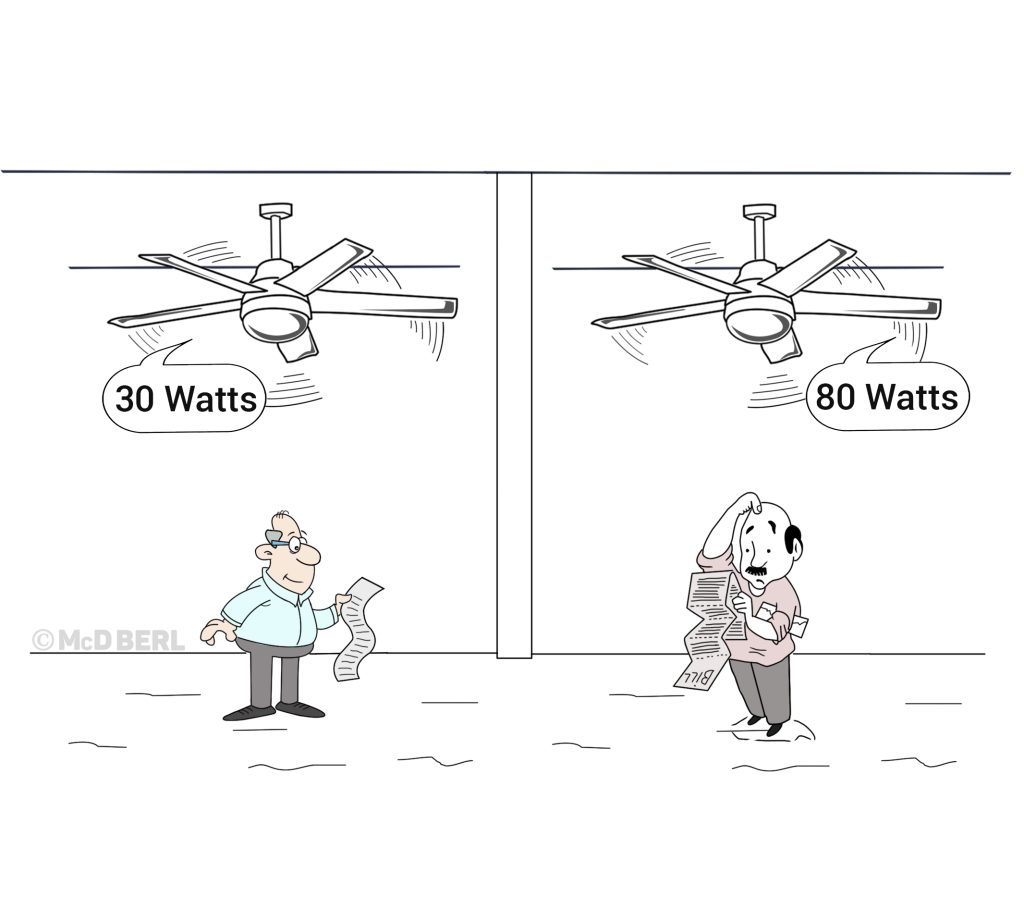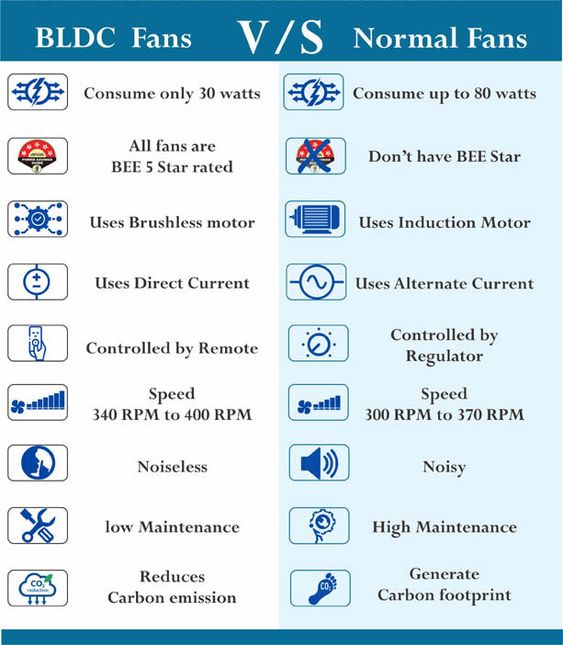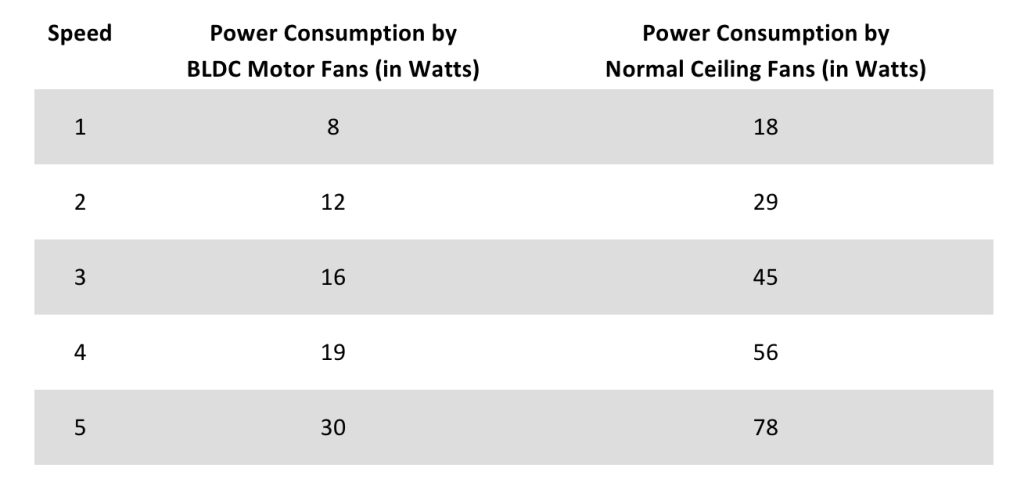How can residential builders help customers reduce their electricity costs?

India, known for its tropical climate, the widespread reliance on fans is unsurprising given their indispensable role in daily life. Fans are considered essential household items, regardless of the dwelling’s size. However, the use of fans has a clear impact on monthly electricity bills, regardless of the fan type or location.
Traditionally ceiling fans are equipped with AC Induction Motors (ACIM) consuming approximately 75 to 90 Watts. Technological advancements in home appliances, driven by the growing emphasis on energy efficiency, have given rise to new options. Among them, BLDC (Brushless Direct Current) fans stand out as a recent and promising upgrade. These fans boast the potential to reduce energy consumption by up to 65%, while also operating at higher speeds compared to their conventional counterparts.
As industries strive to manufacture products that offer maximum output with minimal energy consumption, BLDC fans emerge as a noteworthy solution. In this article, we delve into a comparison between BLDC fans and traditional fans, shedding light on how the former can prove to be a more advantageous choice for those considering a fan purchase for their homes.
BLDC Fans vs Normal Fans – Which is the better one?
Ceiling fans run on either carbon-brushed induction motors or brushless DC motors. While BLDC and DC motors differ in many ways, their energy consumption is the main distinction.
- In a brushed DC motor, stationary magnets are used to create magnetic fields. Whereas in the case of BLDC fans, permanent magnets are used that convert AC into DC, making them more efficient to save energy.
- Brushed motors generate heat due to friction whereas BLDC motors are heatless.
- If you go deeper into their technicality, these are technologically more advanced, more powerful, and less energy-consuming than traditional ones.

Power Consumption:
A traditional fan consumes 70-80 watts on average, while a BLDC ceiling fan only takes up to 30 watts, saving around 50% of your electricity. When changing just one fan can save 1500-1600 Rs. per year, think how much you can save on your electricity bill by replacing all of it in your home!
The following comparison between BLDC Fan and Normal fan will help you get a deeper understanding of this:

Noise:
The whole purpose of any fan is to keep you cool and calm, but their humming sound can be really disturbing. Whether it’s for your office or home, unwanted noise is always troublesome.
The friction of the carbon brushes is the main reason behind the noise. But with brushless technology, you can experience cooler air without any noise. Thus, when comparing BLDC vs Normal Fan, we can call the former ones the Silent Performers!
Conclusion
When comparing BLDC Fans vs Normal Fans, the former is a step ahead with its own advantages. These energy savers come with many advanced features that make them worth the extra expense. Not only can they benefit us personally by reducing our monthly electricity bill but can create a big difference on a global scale by saving energy.
At McD BERL, we provide end-to-end MEP solutions and sustainable building services to ensure your building is cost-effective, offers lower operational costs, is highly energy and resource-efficient, and is extremely comfortable for the occupants.




